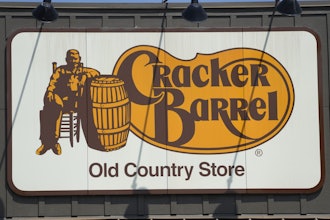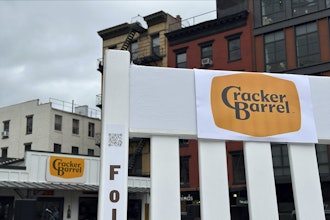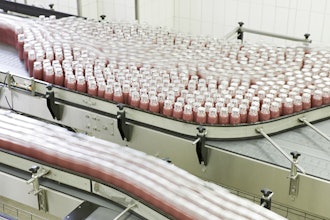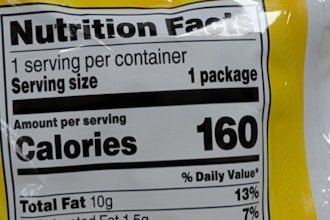
More than ever, consumers care about the environmental impact of their purchases. As a result, many manufacturers of consumer packaged goods have begun marketing the eco-friendly aspects of their products. This marketing strategy does not come without risk, however. If a company is not able to substantiate an environmental marketing claim – meaning support it with reliable data and evidence – the manufacturer may be targeted for an enforcement action by regulators, or a consumer class action lawsuit. Therefore, companies in the consumer packaged goods space should be aware of the requirements for substantiating “green” claims to avoid an expensive mistake.
Legal Framework: FTC’s Green Guides
The Federal Trade Commission’s “Guides for the Use of Environmental Marketing Claims” (“Green Guides”) are a set of guidelines designed to help companies avoid making misleading claims. Last revised in 2012, the Green Guides include both general principles that apply to all environmental marketing claims, and guidance about specific claims, like “compostable,” “degradable” and “recyclable.”
While the Green Guides are not binding agency regulations, they describe the kinds of environmental claims that may violate Section 5 of the FTC Act, which generally “prohibits deceptive acts and practices in or affecting commerce.” The Green Guides state that, in order to avoid deceiving consumers, “marketers must identify all express and implied claims that the advertisement reasonably conveys” and “ensure that all reasonable interpretations of their claims are truthful, not misleading, and supported by a reasonable basis before they make the claims.”
That last requirement – that claims be “supported by a reasonable basis” – means that all marketing claims should be substantiated. Pursuant to the Green Guides, substantiating environmental marketing claims “often requires competent and reliable scientific evidence” consisting of “tests, analyses, research, or studies that have been conducted and evaluated in an objective manner by qualified persons and are generally accepted in the profession to yield accurate and reliable results.” Other ways to substantiate environmental marketing claims include through expert opinions and testimony.
Prior enforcement actions demonstrate that the scientific evidence should involve testing and evaluation of the same products that are subject to the “green” claim. Further, brands must be in possession of the evidence substantiating the claims before advertisements or marketing materials making the “green” claims are published.
Manufacturers should bear in mind that some states, such as California, have laws that specify the parameters for making and substantiating green marketing claims. See, s.g., California Business & Professions Code § 17580 et seq. and Public Resources Code §§ 42355-42357.6. Companies should confirm whether and how state laws may impact their marketing claims.
Satisfying The Substantiation Requirement
Given the importance of having prior substantiation for express and implied environmental marketing claims, manufacturers should be aware of pitfalls in making claims, as well as potential methods for substantiating their claims.
Claims to Watch Out For: Implied, General, Overstated and Comparative Claims
When evaluating claim language to include on labels or in marketing materials, there are a few pitfalls companies should keep in mind. First, they may be required to substantiate claims they did not even intend to make. These are known as implied claims. An implied claim is any claim that is reasonably implied by the product’s labeling or marketing as a whole. Thus, the FTC suggests avoiding unqualified, general environmental benefit claims like “eco-friendly,” “sustainable” or simply, “green.” The Green Guides make clear that these broad claims are difficult to substantiate because they convey a wide range of reasonable meanings.
Companies should also take care not to overstate the environmental attributes of a product either directly or by implication, by exaggerating the product’s benefit or using too broad of a “green” marketing claim. Instead, the FTC recommends that marketers endeavor to make specific, clearly stated claims and appropriately qualify such claims to align with what the company can substantiate.
Another type of claim that can be tricky to substantiate is a comparative “green” claim. An example of this claim is “environmentally preferable.” The Green Guides caution against claims like this because, as previously discussed, it is unlikely that a marketer will be able to substantiate the unqualified message that the product is environmentally superior to all other products.
Relatedly, companies should exercise care when making specific comparative claims, such as “made with 20% more recycled content.” The FTC points out that these claims can cause confusion because consumers do not know whether the claim is compared to the advertiser’s previous products, or to competitors’ products. Without qualification, the Green Guides require marketers to substantiate both interpretations.
Seals and Certifications Also Require Substantiation
One way manufacturers may substantiate marketing claims is through certifications and seals relating to certain product attributes. For example, one way to substantiate an “organic” or “non-GMO” claim is through the USDA’s Agricultural Marketing Service (AMS), which provides independent verification of agricultural marketing claims through its Process Verified Program (PVP). Under the PVP, a company submits for both a desk review and an in-person audit, and auditors review the manufacturer’s production process. If the audit reveals the manufacturer can reasonably support its marketing claim, it can claim certain certifications including “USDA Process Verified,” and use the USDA shield.
Investigations into third-party certification programs show the importance of using diligence when selecting a certification or seal. For example, the New York Times revealed wide-scale fraud in the certification of “organic” cotton produced in India. According to the article, the two companies charged with inspecting cotton suppliers delegated the task, and the ultimate inspectors made organic certifications available for purchase. The certifications then made their way up the chain of commerce to clothing manufacturers and brands that relied on the certifications when marketing their goods. This system of “trading paper” apparently resulted in a volume of “certified organic cotton” that was multiple times the amount actually produced. The USDA has since terminated its agreement to recognize organic products certified by companies that are overseen by India’s government and all such companies must now be accredited by the USDA’s National Organic Program standards.
Substantiation Using Blockchain Technology
Blockchain technology allows manufacturers, suppliers, and retailers to transparently and efficiently record, track, trace, and collect information about their products’ supply chain in order to substantiate sustainability claims. This emerging technology provides an immutable, distributed ledger of information that can be accessed by many people, thus fostering transparency between manufacturers or retailers and consumers, as well as allowing businesses to meet reporting requirements. For example, blockchain can be used to track provenance of sustainable goods and emissions data, monitor labor practices, and track and sell carbon credits.
Over the last several years, various blockchain-based tools and services for tracking products in the supply chain have emerged and more companies have been experimenting with the technology to track and share supply chain information for both consumable and non-consumable products. For example, Moyee, a Dutch coffee brand, is using blockchain to track its beans from farm to consumer and also to allow consumers to make payments directly to the farmers in Ethopia. Moyee is geo tagging their farms and washing stations in order to prove and track location, and they provide farmers with digital identification and mobile wallets for receiving payments. Consumers can scan a QR code on their bag of beans that allows them to tip the farmers directly, and to review their product’s history “from the farmer, the women at the washing station to the team at the roastery, the bagger, the transport guy, Killian and Shane at Moyee Coffee Ireland down to the store or supermarket.” Moyee’s platform is intended to allow consumers to see who gets paid and also “where the carbon and pollution is added.”
As another example, Clarins launched a platform providing access to all steps in its product manufacturing process, including insight into sourcing certifications, harvesting methods, and other environmental claims.
Everledger has also developed blockchain technology for tracking raw materials such as diamonds from source to consumer. Everledger’s blockchain-based platform “collects data from miners and manufacturers, certification agencies, and retailers” and “provides clients with a record viewer that allows them to see the lifetime story of each asset including origin, sustainability practices, and chain of custody throughout its lifecycle.” In response to a public call from the US Department of Energy for supporting sustainability in the industry, Everledger’s technology is being used for tracking battery “location, condition and health score, with a view to extending its useful life, generating less waste and avoiding leakage into the environment.”
As this technology becomes more widely adopted by businesses and consumers alike, more companies may consider using blockchain technology as an option to substantiate environmental marketing claims. If your company is exploring blockchain-based solutions for your sustainability or other needs, it is prudent to work with attorneys who understand the technology and the unique legal implications the technology presents.
Conclusion
Consumers are increasingly focused on the impact their purchases have on the environment, and accordingly may choose one product over another because it is marketed as “eco-friendly.” Manufacturers, understandably, will wish to lean into marketing these aspects of their products. However, doing so is not without risk. Crucially, marketers should have substantiation for all environmental marketing claims reasonably communicated by their advertising and labeling, and should be able to point to such substantiation if needed.
Abby Meyer co-leads Sheppard Mullin’s Food and Beverage Team. Yasamin Parsafar co-leads the Firm’s Blockchain and Fintech Team. Abigail Miles is an associate who focuses on complex litigation and consumer class action is and member of the Food and Beverage Team.






















